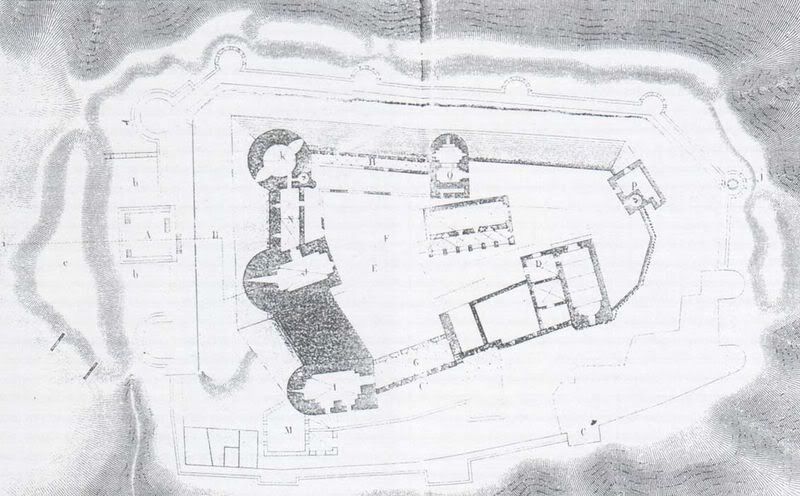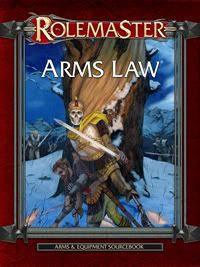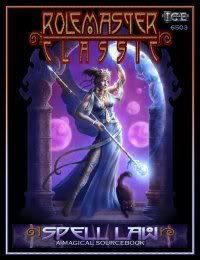I'm taking some time out to discuss the Known Realms. It's my Rolemaster World to be precise. The Known Realms is located on a Continent about the size of North America. There's oceans, but basically they are a barrier to exploration (which can be overcome).
The Known Realms includes many kingdoms, varying in size. Most everyone speaks English in one particular kingdom, but many different languages in others (I am no linguist, so don't expect me to try and construct any languages).
It's a pretty vague land, with a jumble of different cultures and religions. It's designed to be about as varied as the Dungeons and Dragons Realm of the D&D T.V. Show. See below for part of an episode. In other words, it's just a land to set Fantasy Roleplaying Adventures on.
Saturday, January 31, 2009
Friday, January 30, 2009
Designing your Own Rolemaster Adventure, Part 2
Now with our adventure planned out, we can go into doing the floor plan. There is one thing about the Crac des Chevaliers, our "castle set piece." There is a floor plan laid out for us.

Click the picture link for the full resolution and download (80o pixels, but in Photoshop you can blow it up with little trouble). If you notice, this floor plan comes from the 1800's, and the person that did it up already labeled each room for us with a letter.
So we have lots of places to put some monsters and some traps (like yellow mold and green slime). We can also decide where Juno, our foil, is holed up planning her wicked and selfish deeds.
Looking over the map, you can see some stables and a barracks. These places are unkeyed (no letters). The Castle Keep is also unkeyed. It is also in the middle of the castle, and equates to nothing but a great hall. This is the place where we can put our illusionist foil. According to the Artist's rendering of the Crac des Chevaliers, the Hospitalers have built at least four stories of rooms into this Crusader castle. Lets assume some of them are destroyed, adding structural decay and damage to our list of dangers.
This means that some of the letters have rooms on top of each other. So, when I key these letters, I will add numbers. This will make Keying easier. Next post will deal with keying each room with monsters and traps; and maybe some treasure that hasn't been looted yet.

Click the picture link for the full resolution and download (80o pixels, but in Photoshop you can blow it up with little trouble). If you notice, this floor plan comes from the 1800's, and the person that did it up already labeled each room for us with a letter.
So we have lots of places to put some monsters and some traps (like yellow mold and green slime). We can also decide where Juno, our foil, is holed up planning her wicked and selfish deeds.
Looking over the map, you can see some stables and a barracks. These places are unkeyed (no letters). The Castle Keep is also unkeyed. It is also in the middle of the castle, and equates to nothing but a great hall. This is the place where we can put our illusionist foil. According to the Artist's rendering of the Crac des Chevaliers, the Hospitalers have built at least four stories of rooms into this Crusader castle. Lets assume some of them are destroyed, adding structural decay and damage to our list of dangers.
This means that some of the letters have rooms on top of each other. So, when I key these letters, I will add numbers. This will make Keying easier. Next post will deal with keying each room with monsters and traps; and maybe some treasure that hasn't been looted yet.
Male Nude
Sometimes, you need to follow the old masters.

This male nude was done in DAZ Studio with some post work to bring him out of the shadows. The model is Hiro 3. I've done Vicky 4 in the nude, before, and a male nude was lacking (Hiro 3 does not ship with gens, I downloaded them for free from another site).

This male nude was done in DAZ Studio with some post work to bring him out of the shadows. The model is Hiro 3. I've done Vicky 4 in the nude, before, and a male nude was lacking (Hiro 3 does not ship with gens, I downloaded them for free from another site).
Thursday, January 29, 2009
Designing Your Own Rolemaster Adventure, Pt. 1
Although a lot have been said about this in the past, there happens to be some guidelines in designing an adventure. The most basic way of designing and adventure for your own Rolemaster Adventure is to know about your characters.
Are they farm boys and girls, or military brats? Do they come from the brothel or from high society? These questions help shape your first adventure. For the sake of simplicity, however, lets explore the assumption that they want to explore the world around them.
1. The heroes are farm boys living in the Town of Oaksprings.
Question 2. What sort of environment does Oaksprings have? For simplicity, lets assume it has a valley. With a ruin connecting to some caves and such. I'll provide a picture to said ruin . . .

( Yes that is the Crac des Chevaliers)
Not something you would find in Conan, but something you can find connected to the Crusades. This castle is overlooking Oaksprings from atop it's hill. It's ruined, as it was destroyed some twenty years ago. So, now, we have a place where your adventurers come from, and a place where they can explore for adventure.
But an Adventure is not without it's dangers. It's time to plan what we put into the castle. Make a list of what your heroes would encounter. Here's a list of dangers the usual Rolemaster Hero may come across in a world like the Known Realms.
1. Pit Viper
2. Orcs (lesser)
3. wolf
4. Gorgon
5. Minotaur
6. Werewolf
7. Skeleton (minor)
8. Zombies
9. Naga
10. Alothere (Elothere)
11. Giant Spiders
12. Kobolds
13. Troglodytes
14. Tatzelworm
After completing your list of creatures, you need something to reward your player characters with. Treasure is often the best answer to that question. Lets open Creatures and Treasures for Rolemaster Classic and make a list of treasure.
The general rule for handing out treasure for low levels is simple enough. Never give out too much, or you go into Monty Haul style campaigns. Treasure is something that is a reward for a job well done in bringing down your opponents in defeat. Realistically, our castle already has been sacked, so whatever the treasure reward is often had by our monsters or our foil.
So, lets design a bad guy for our player characters to encounter. If you are planning a campaign, a villain (like a Dark Lord type, or Femme Fatale type) must be already in your head. But since this an adventure, a foil (i.e. walk-on bad guy) would be perfect. If you design your foil well, and the PCs like him, or better yet -- love to hate him -- then you have your major villain for your campaign.
For simplicity's sake, lets look through our Rogues Gallery and plop in an illusionist for our foil. Lets say that he is a she. And also for simplicity's sake, lets name her Juno.
So we have our foil: Juno the Illusionist.
So, now we have a good plan for our adventure. Designing the rest: the floorplan and so forth, is the tough part. But there are work arounds for this. :)
I'll have Juno's stats up in a second. For right now; enjoy the D&D cartoon below for some inspiration.
Are they farm boys and girls, or military brats? Do they come from the brothel or from high society? These questions help shape your first adventure. For the sake of simplicity, however, lets explore the assumption that they want to explore the world around them.
1. The heroes are farm boys living in the Town of Oaksprings.
Question 2. What sort of environment does Oaksprings have? For simplicity, lets assume it has a valley. With a ruin connecting to some caves and such. I'll provide a picture to said ruin . . .

( Yes that is the Crac des Chevaliers)
Not something you would find in Conan, but something you can find connected to the Crusades. This castle is overlooking Oaksprings from atop it's hill. It's ruined, as it was destroyed some twenty years ago. So, now, we have a place where your adventurers come from, and a place where they can explore for adventure.
But an Adventure is not without it's dangers. It's time to plan what we put into the castle. Make a list of what your heroes would encounter. Here's a list of dangers the usual Rolemaster Hero may come across in a world like the Known Realms.
1. Pit Viper
2. Orcs (lesser)
3. wolf
4. Gorgon
5. Minotaur
6. Werewolf
7. Skeleton (minor)
8. Zombies
9. Naga
10. Alothere (Elothere)
11. Giant Spiders
12. Kobolds
13. Troglodytes
14. Tatzelworm
After completing your list of creatures, you need something to reward your player characters with. Treasure is often the best answer to that question. Lets open Creatures and Treasures for Rolemaster Classic and make a list of treasure.
The general rule for handing out treasure for low levels is simple enough. Never give out too much, or you go into Monty Haul style campaigns. Treasure is something that is a reward for a job well done in bringing down your opponents in defeat. Realistically, our castle already has been sacked, so whatever the treasure reward is often had by our monsters or our foil.
So, lets design a bad guy for our player characters to encounter. If you are planning a campaign, a villain (like a Dark Lord type, or Femme Fatale type) must be already in your head. But since this an adventure, a foil (i.e. walk-on bad guy) would be perfect. If you design your foil well, and the PCs like him, or better yet -- love to hate him -- then you have your major villain for your campaign.
For simplicity's sake, lets look through our Rogues Gallery and plop in an illusionist for our foil. Lets say that he is a she. And also for simplicity's sake, lets name her Juno.
So we have our foil: Juno the Illusionist.
So, now we have a good plan for our adventure. Designing the rest: the floorplan and so forth, is the tough part. But there are work arounds for this. :)
I'll have Juno's stats up in a second. For right now; enjoy the D&D cartoon below for some inspiration.
Wednesday, January 28, 2009
Classic Dungeons and Dragons and Rolemaster

Did you know that the Rolemaster supplements were designed to supplement Classic D&D? Classic Dungeons and Dragons the grand daddy of all RPGs that is based either on pencil and paper, the computer (CRPGs and MMORPGs, is there such a thing as a Massively Multiplayer Online RolePlaying Game?), or Live Action (although Live Action roleplay has been existing for seven thousand years).
Classic D&D allowed you to do anything you put your imagination too. You want to fight a dragon, just make a cave, a dragon, and something you want that the dragon wants and has (like a princess). And go at it. There wasn't any thing complex to Classic D&D, and you just played it to your heart's content. There was nothing stopping you and your friends from having a good time.
However, along the way, several supplements were developed. Sometimes by third party publishers. One of these publishers was Iron Crown Enterprises. They developed three products that helped D&D play greatly, adding a sense of realism.
The first of these was Arms Law.

Arms Law brought to the table new rules on how to handle combat. Although the Weapon Mastery rules were wonderful in their own way, Arms Law brought realism to the fore of combat; introducing concussion hits, critical strikes, and what would happen if you were critically striked by a weapon or a claw. It came in two supplements: Arms Law and Claw Law. These were eventually merged into ARMS LAW, like you see on the left (which is the 2003 Revision).
This brought Classic D&D on a more dangerous level. Not only can your character die, but can die from a critical strike. Here's one infamous critical strike from said book:
Strike to foe's groin area. +10 hits. All vitals are destroyed immediately. Foe is stunned and unable to parry for 12 rnds and then dies.
That is the E critical Strike from the slashing table with a result of 100. That means any foe, of any level, can die instantly or after a period of time (ie. 12 rounds). This made playing D&D much more lethal to your character, but instantly more fun since it added the realism some players so craved.
 Not to be outdone, we have Spell Law. Besides adding rules for weapons, we have rules for spell casting; a lot of new spells to work with, and -- the happy Critical Strikes that such spells can cause.
Not to be outdone, we have Spell Law. Besides adding rules for weapons, we have rules for spell casting; a lot of new spells to work with, and -- the happy Critical Strikes that such spells can cause.So, not only can your character die by slashing hits, bludgeoning damage, crushing blows, and the Full Nelson, your character gets to be blown up -- and be blown up -- in style.
For instance, to quote the Fire Ball critical result table:
All that remains of foe are charred bits of teeth and bone. Add +20 to your next roll.
Doesn't sound like a walk in the park: for you or for your foe, right? But that is exactly what would happen if you cast a fireball spell at somebody! I refer you to the video above to see how dangerous fire can be if you don't believe me. Spell Law brought that kind of realism to the Classic D&D game.
 Finally, we come to the third installment to the series, Character Law. Character Law is designed to bring advanced character development to the Classic D&D game by allowing you to define what your character is capable of. This went so far as to define what your character knows: in terms of total basic knowledge that pertains to adventuring (hiding, swimming, running, etc.). The rest: such as where your character came from, how he got there and what he does on his spare time; was up to you.
Finally, we come to the third installment to the series, Character Law. Character Law is designed to bring advanced character development to the Classic D&D game by allowing you to define what your character is capable of. This went so far as to define what your character knows: in terms of total basic knowledge that pertains to adventuring (hiding, swimming, running, etc.). The rest: such as where your character came from, how he got there and what he does on his spare time; was up to you.So there you have it: Rolemaster is really a Classic D&D toolkit. These supplements enhanced everything pertaining to Classic D&D: weapon and combat rules, critical strikes, spell effects, and defining your character.
These concepts were eventually adapted into the D&D game little by little. Today, 4th Edition Dungeons and Dragons exist -- a game that has been influenced by ICE's game -- Rolemaster. Also, today, Rolemaster has evolved into a perfectly good game by itself. You can play Rolemaster by itself, or added to D&D. However, as for what Rolemaster has been designed, I suggest classic D&D.

Saturday, January 17, 2009
National Geographic News
I thought I would add a daily news widget from National Geographic in order to keep posting. This will keep you up to date as to what National Geographic is doing.
Sunday, January 4, 2009
 Another 3D creation, Angel Portrait will figure in a new roleplaying game supplement for D20 Modern. So far, Arcane Dispatch seems to be a good thing to work with. At the moment, here is what the cover art might look like. :)
Another 3D creation, Angel Portrait will figure in a new roleplaying game supplement for D20 Modern. So far, Arcane Dispatch seems to be a good thing to work with. At the moment, here is what the cover art might look like. :)As I continue, though, I had a thought on the kind of Husband I wish to be. I'll post more on that when I can.
Saturday, January 3, 2009
More DAZ Studio adventures
Subscribe to:
Comments (Atom)
